- Address : Oktobarske revolucije 127, 81000 Podgorica
- Tel. : +382 69 130 130
- Email : info.medtim@gmail.com


Shoulder is the most mobile joint of the human body, which consists of three bones: the blades (scapula), collarbone (clavicle) and the upper arm bone (humerus). At Medtim hospital we treat: shoulder impingement or painful arc syndrome, rotator cuff tear, biceps tendonitis, frozen shoulder (adhesive capsuilitis), subacromial bursitis and arthritis.
Medtim hospital we have different medical procedures:
1. Shoulder blockage
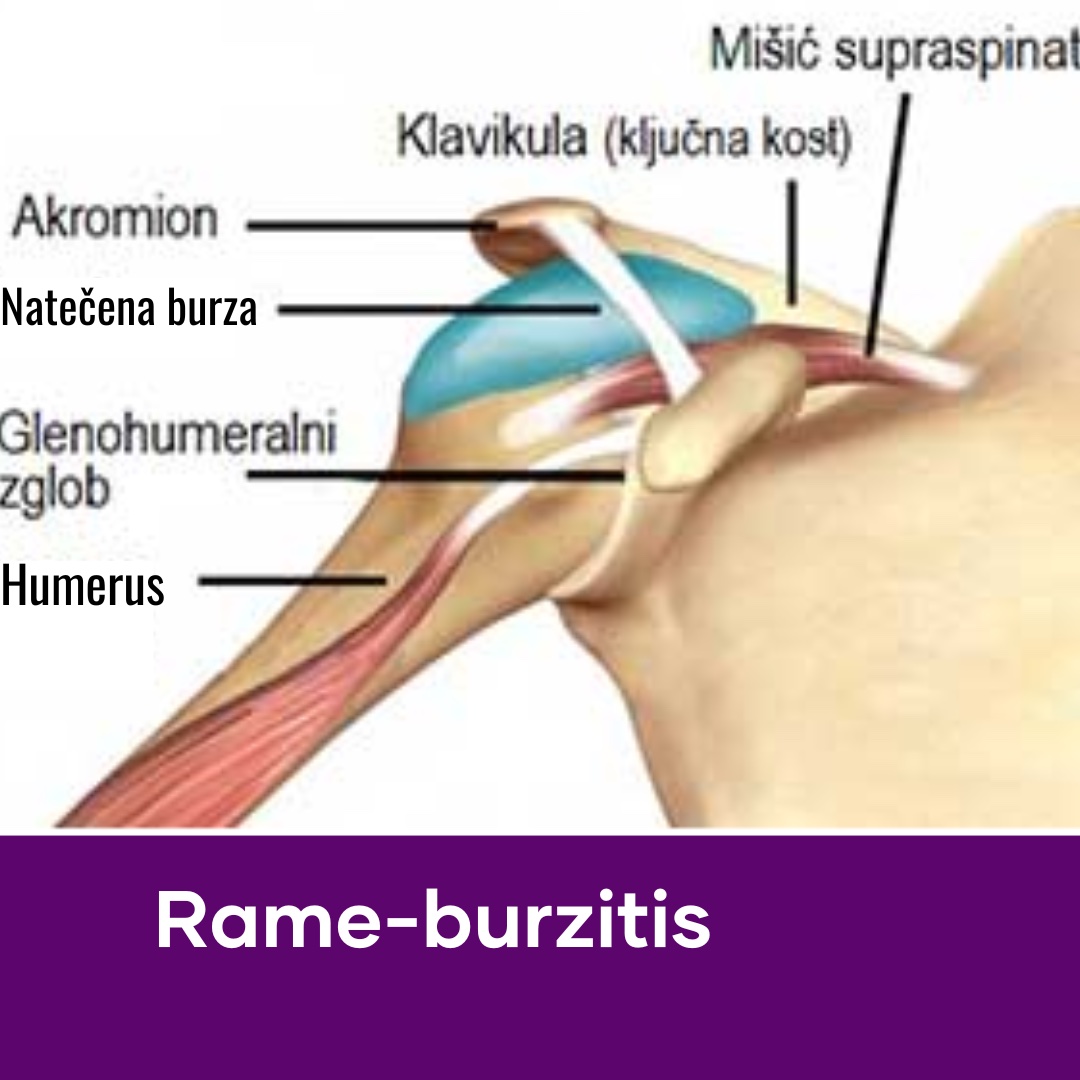
It’s not fully understood what causes a frozen shoulder, but an inflammatory process is probably involved. Sometimes freezing occurs because the shoulder has been immobilized for a long time by injury, surgery, or illness. The treatment for a frozen shoulder is focused on relieving pain and restoring the shoulder's normal range of motion. The blockade may contain sterile saline water, local anesthetic or stimulating needle. Or a patient may be given a corticosteroid injection into the shoulder joint or soft tissues. The type of treatment depends on doctors’ estimation on what should help the best.
2. Arthroscopy
Shoulder arthroscopy is surgery that uses a tiny camera (arthroscopy) to examine or repair the tissues inside or around your shoulder joint. The arthroscope is inserted through a small cut (incision) in your skin. Arthroscopy is usually used to treat shoulder impingement, frozen shoulder (adhesive capsuilitis), rotator cuff tear or biceps tendonitis. Arthroscopy has many advantages such as higher precision, lower risk of infection and faster recovery time.
3. Subacromial decompression
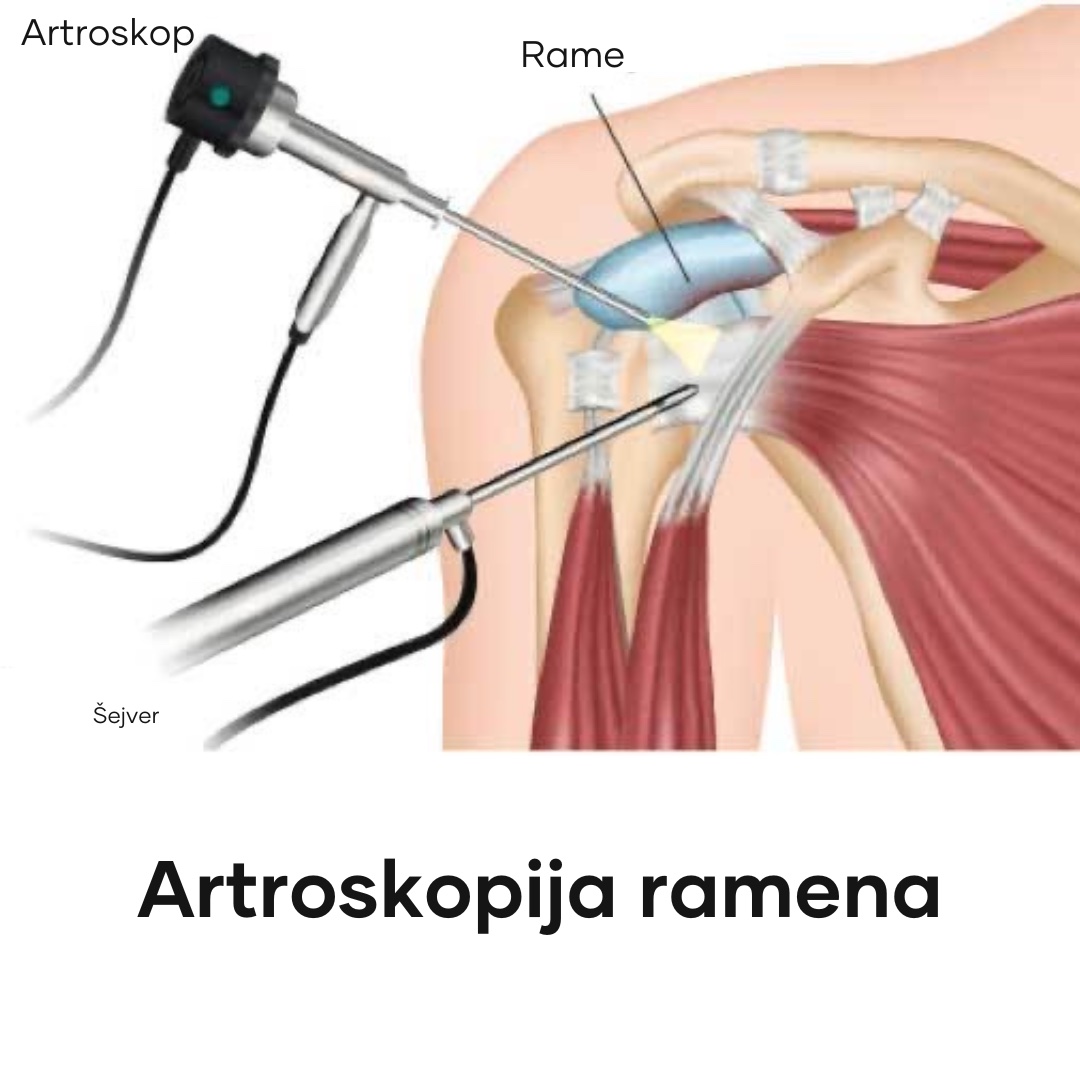
Subacromial decompression is a relatively non-invasive arthroscopic procedure to treat subacromial impingement syndrome. Subacrominal impingement is a condition where the rotator cuff tendon is pinched between the humeral head and the under surface of the acromion. It's usually done through keyhole surgery (arthroscopy), which lowers the risk of infection and possible complications.
4. Shoulder’s stabilization
Shoulder stabilization is a procedure that saws the ligament that is torn, usually after a shoulder dislocation. Recently it is preformed as an arthroscopic day surgery.
5. Rotator cuff repair
The rotator cuff is a group of muscles and tendons that form a cuff over the shoulder joint. These muscles and tendons hold the arm and help the shoulder joint move. Choice of treatment depends on the information if tendons are torn from injuries or created from degenerative changes. For traumatic injuries it is usually required surgical intervention, and for degenerative, physical therapy is suggested firstly. Rotator cuff repair is surgery to repair a torn tendon in the shoulder. The procedure can be done with a large (open) incision or with shoulder arthroscopy, which uses smaller incisions.
6.PRP
PRP (Platelet Rich Plasma) is a new method that uses patient’s blood to rejuvenate tissue. This treatment showed best results in cases of muscle sprains and injuries of tendons and ligaments that do not require surgical reconstruction and also in case of initial degenerative condition of the joints (arthrosis). The most common conditions for the application of this method are the Achilles tendon injuries, tendon irritation (tennis, golfer's elbow) and softening the cartilage (which is the first stadium of arthrosis).
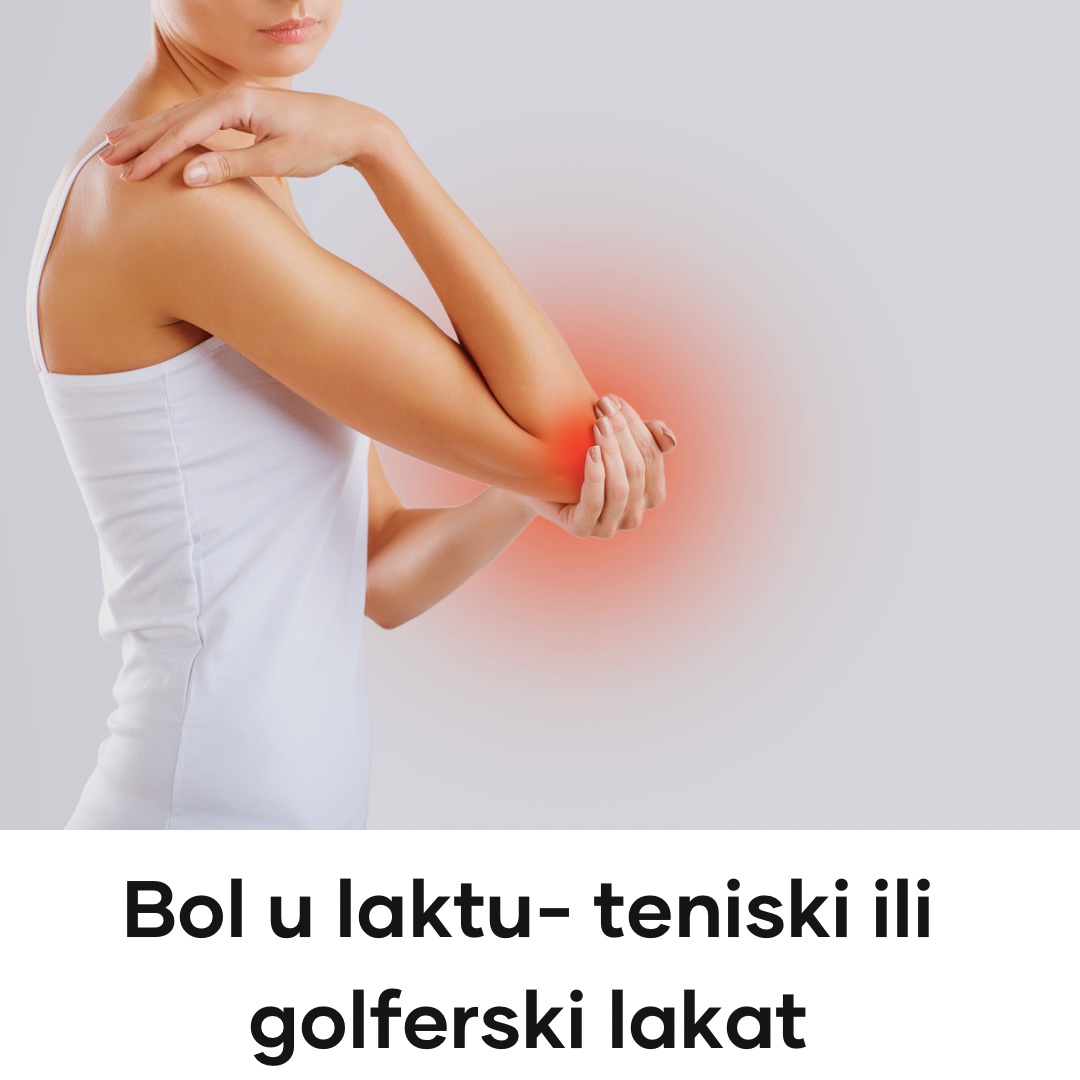
The elbow is the joint that connects the upper arm to the forearm. It contains bones, ligaments and joints that provide the ability of arm to bend and hands to turn. A smaller joint by comparison to others, the elbow can be susceptible to a variety of injuries including common overuse conditions as well as dislocations, fractures and even arthritic conditions.
In Medtim hospital, we successfully operate on many conditions such as golfer’s elbow, tennis elbow, cubital tunnel syndrome, tendinitis or elbow fractures.
1. Elbow blockage
The treatment is focused on relieving pain and restoring the elbow's normal range of motion. The blockade may contain local anesthetic or corticosteroid injection into the elbow or soft tissues. The type of treatment depends on doctors’ estimation on what should help the best. The treatment is given on every 4-6 weeks.
2. Arthroscopy
This method is used for the inflexibility of the elbow or complete lack of movement (adhesions, contractures or arthritis). As with the shoulder, the method itself involves several minimal incisions and faster recovery period.
3. Removal of loose bodies
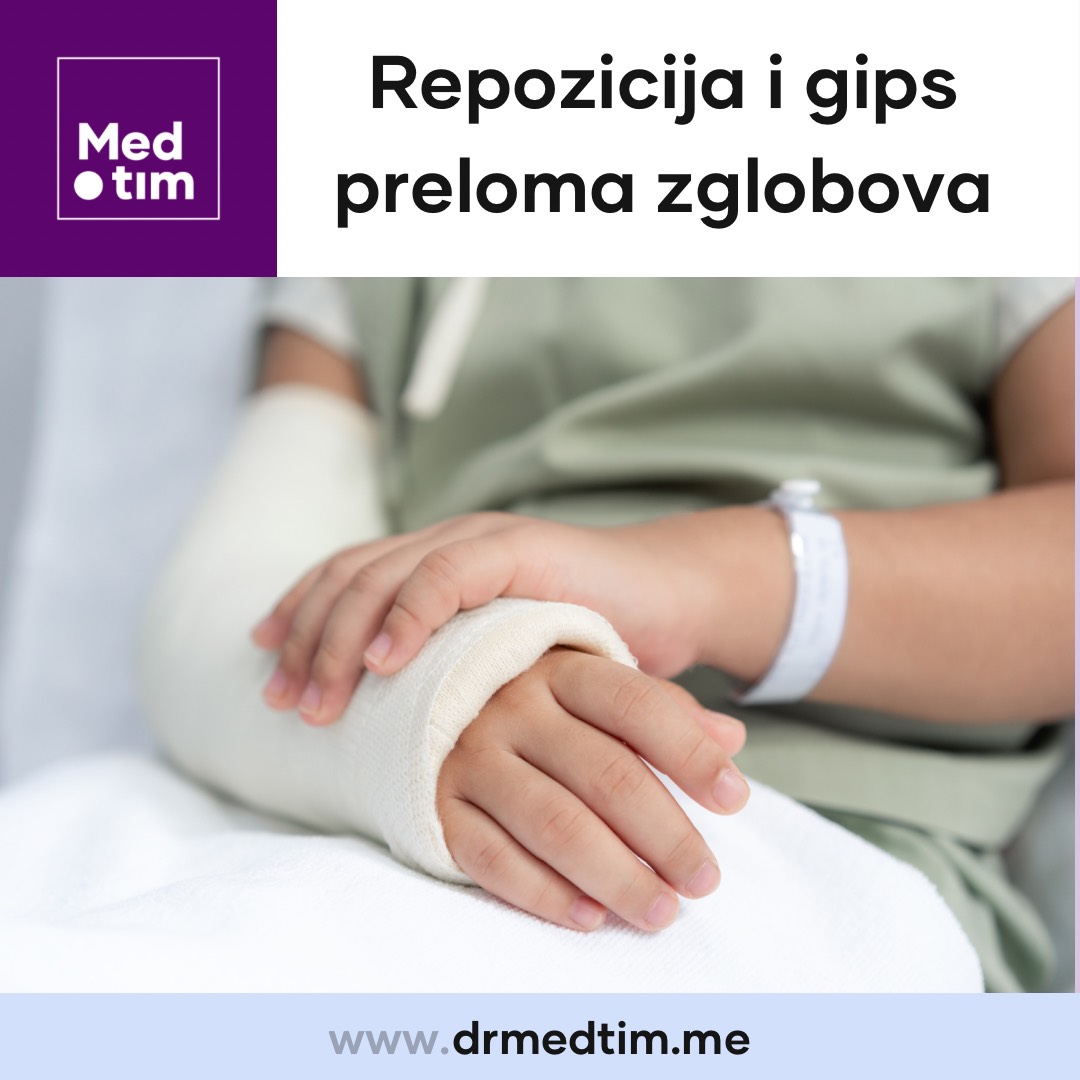
Loose bodies are small fragments of bone or cartilage that have broken off inside a joint. As these fragments float free within the elbow, they can cause pain and even get caught in the moving parts of the joint. The fastest, most accurate and most efficient method of removal of these bodies is arthroscopy.
4. PRP
PRP (Platelet Rich Plasma) is a new method that uses patient’s blood to rejuvenate tissue. This treatment showed best results in cases of muscle sprains and injuries of tendons and ligaments that do not require surgical reconstruction and also in case of initial degenerative condition of the joints (arthritis). The most common conditions for the application of this method are the Achilles tendon injuries, tendon irritation (tennis, golfer's elbow) and softening the cartilage (which is the first stadium of arthritis).
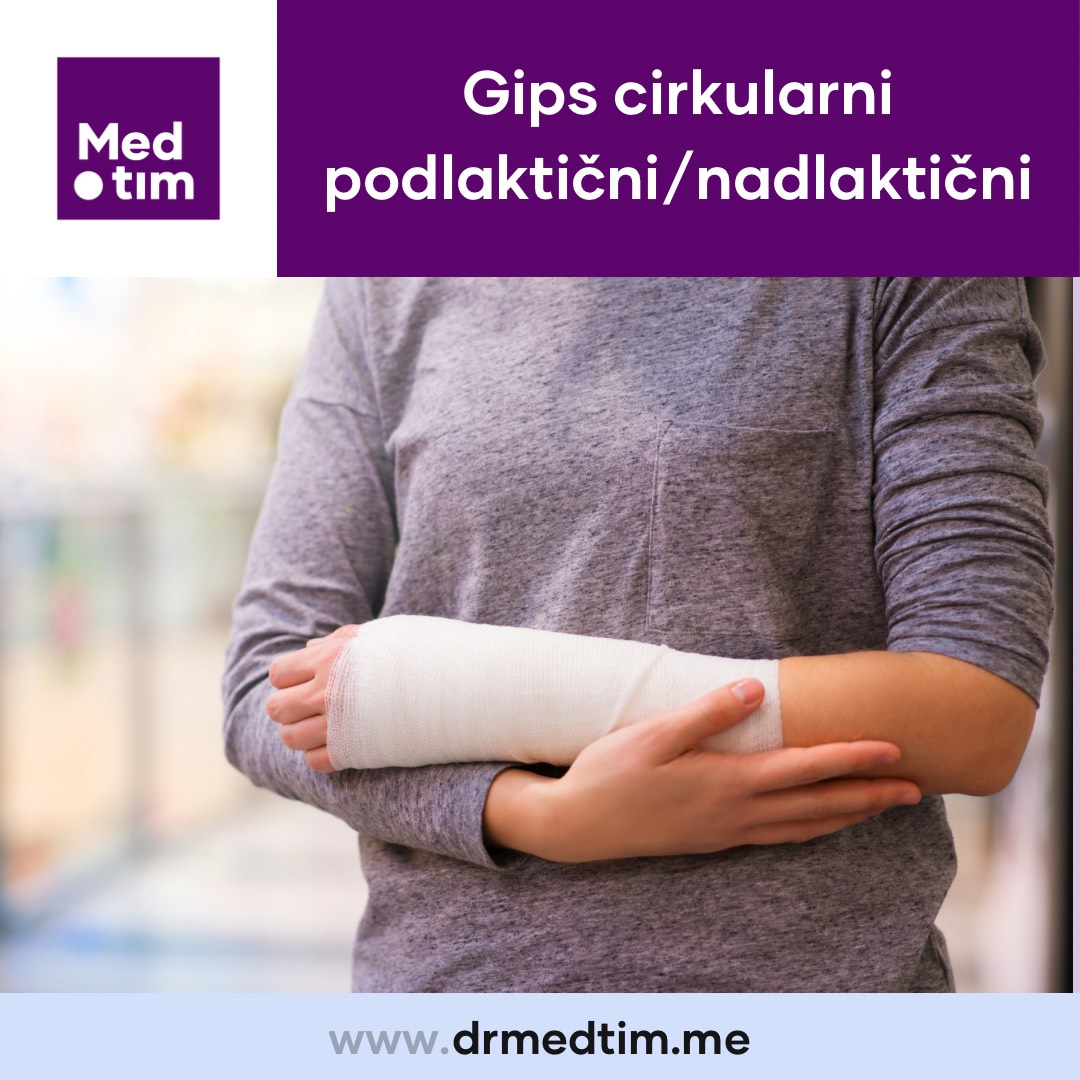
Hand and wrist consist of 29 bones and 36 joints, which are connected with numerous ligaments and moved by 19 intrinsic and 19 extrinsic muscles. Due to its complex structure, as well as exposure to various loads on a daily basis, there are numerous diseases and injuries of the hand. Some of the more common injuries and diseases of the hand and wrist are: fracture of the carpal and metacarpal bones, poor coalesced breaks, ligament and tendon injuries, Dupuytren's contracture, Guyon's canal syndrome, Boutonniere deformity, Carpal tunnel syndrome, Degenerative diseases (eg. osteoarthritis), De Quervain's tenosynovitis and tumors.
Hip is very stable joint, which allows a large number of movements. Problems in the hip are numerous, and some occur in the childhood, but some are the result of large loads, injuries, tumors or other diseases. It is always important to locate the hip pain and whether it comes from the lumbar spine or hip itself.

Orthopedic surgeons use a variety of orthopedic prosthetic implants to replace missing joints or bones, or to provide support to a damaged one. Most commonly, orthopedists use prostheses for knees and hips, allowing the patients to regain full range of motion, pain-free, in a relatively short amount of time. In some cases, the prosthetic material can be combined with healthy bone to replace diseased or damaged bone, or prostheses can replace certain parts of a joint bone entirely.
At the hospital Medtim, best orthopedic prosthesis in the world is implanted for patients. Whether it comes to cement prosthesis for less active people with poor bone quality or cement-less that is intended for people with better bone mass, the durability of both types is equal and usually ranges from 15 to 20 years. In order to ensure the best care after surgery or artificial knee prosthesis, the patient is in the hospital for 7 days with the assistance of physiotherapy every day
Arthroscopy of hip
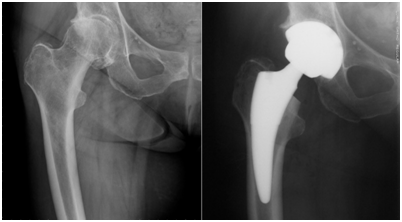
This procedure allows the surgeon to diagnose the cause of hip pain. Also some hip conditions may also be treated arthroscopically, such as hip impingement (femoroacetabular impingement), repair of a labral tear, and removal of loose fragments of cartilage inside the joint, arthritis or tumor.
The knee joint is the most commonly injured joint in the human body. It connects thigh bone (femur) to the bones in lower leg (tibia and fibula) and also includes the kneecap (patella). The surface of the bones inside the knee joint is covered by cartilage, which absorbs shock and provides a smooth, gliding surface for joint movement. Although a knee problem is often caused by an injury to one or more of these structures, it may have another cause. Many jobs, sports and recreation activities, getting older, or having a disease such as osteoporosis or arthritis increase patients chances of having problems with knees.
In Medtim hospital, orthopedic surgeons operate on tibia fractures, ACL injuries, reconstruction of ACL, kneecap bursitis, meniscus tears and repairs, patellar tendon fractures and ruptures and knee replacement.
Orthopedic surgeons use a variety of orthopedic prosthetic implants to replace missing joints or bones, or to provide support to a damaged bone. Most commonly, orthopedists use prostheses for knees and hips, allowing the patients to regain full range of motion, pain-free, in a relatively short amount of time. In some cases, the prosthetic material can be combined with healthy bone to replace diseased or damaged bone, or prostheses can replace certain parts of a joint bone entirely.
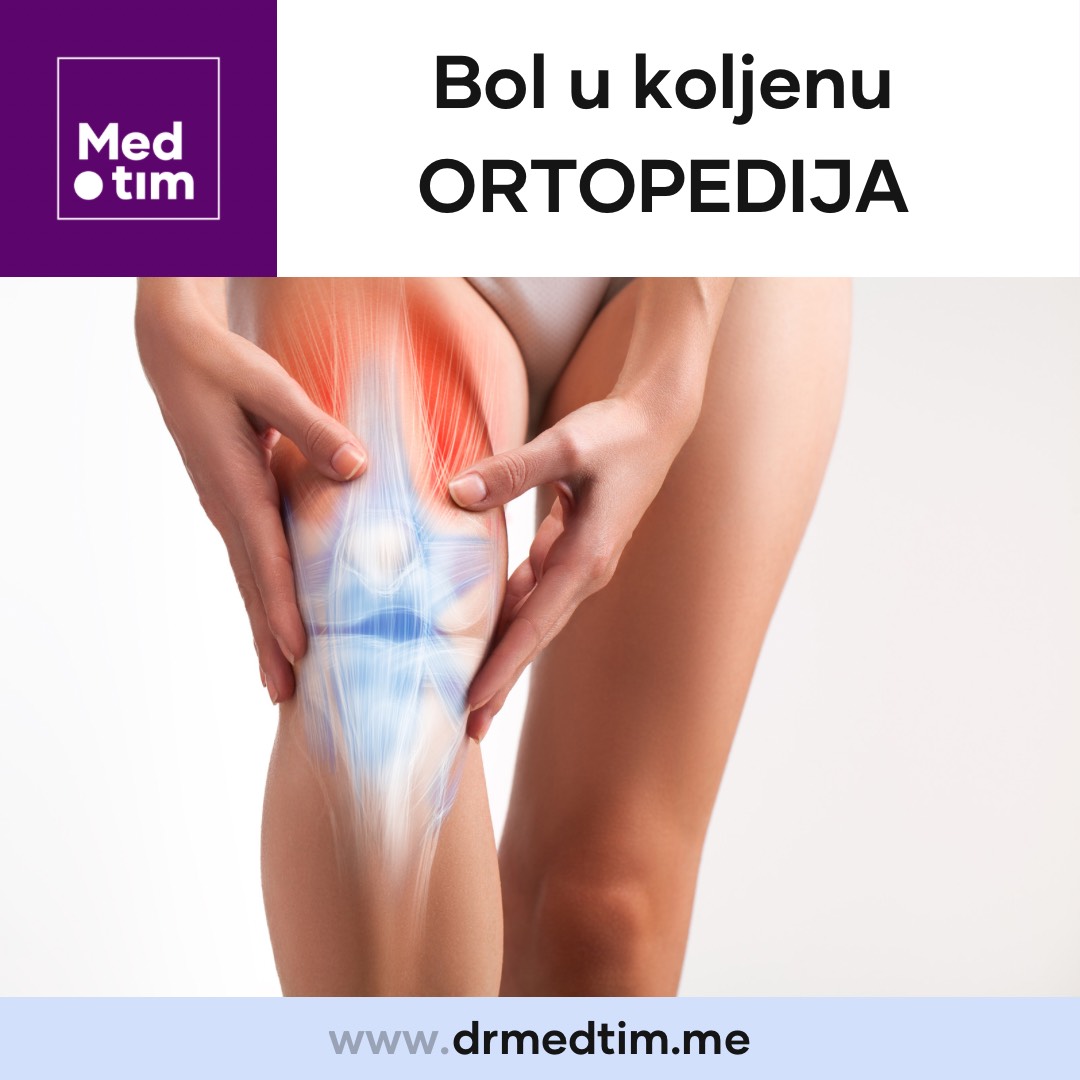
At the hospital Medtim, best orthopedic prosthesis in the world is implanted for patients. Whether it comes to cement prosthesis for less active people with poor bone quality or cement-less that is intended for people with better bone mass, the durability of both types is equal and usually ranges from 15 to 20 years. In order to ensure the best care after surgery or artificial knee prosthesis, the patient is in the hospital for 7 days with the assistance of physiotherapy every day

The foot is one of the most complex parts of the body. It is made up of 30 bones connected by many joints, muscles, tendons, and ligaments. There are many foot problems such as pain and fracture of bones, ligament injuries, tendon rupture, and degenerative cartilage changes on the foot. These problems can result in limited movement and mobility.
At Medtim hospital, we are doing arthroscopic procedures in the area of the ankle and thumb, but also open procedures for corrective osteotomy, osteosynthesys and reconstruction of tendons and ligaments.
1. Vistabel treatment for excessive sweating
Hyperhidrosis is excessive sweating of face, armpits, palms, and groin or feet, that occurs in childhood. While normal amounts of sweat excreted from the body resolve pollutants and regulate temperature, excessive sweating is not good for health. It is important to emphasize that this treatment does not cure the problem of hyperhidrosis, but eliminates excessive sweating. For most people it is enough to undertake this procedure twice a year.
2. Vistabel botox
Vistabel treatment is the most popular non surgical procedure, which has been used in cosmetic surgery for more than 20 years (In 2002 the treatment was approved by the American organization for Food and Drug Administration (FDA)). Vistabel is carefully applied in very small quantity in order to block the particular muscles involved in facial mimics. It reduces and removes wrinkles on the face, caused by strong activity of these muscles.
3. Dermal fillers
Dermal fillers are one of the most popular methods, when it comes to filling facial wrinkles. By age, skin loses its elasticity, collagen, hyaluronic acid and hydration. Hyaluronic fillers treat all areas of face, such as: nasolabial wrinkles (from nose to lips), areas around eyes, forehead and cheeks, as well as for lip augmentation. This treatment restores lost volume (filling in cheeks, emphasizing the lost lines of the chin, lifting lip corners) and rehydrates skin due to the retraction of the water molecule. However, it is most commonly used for lip augmentation. Anesthetic cream is applied before the procedure, which makes this treatment less painful. The redness usually disappears in a few hours after the injection of fillers, while swelling and bruising usually disappear within a few days.
4. PRP
PRP (Platelet Rich Plasma) is a new method that uses patient’s blood to rejuvenate tissue and damaged skin. This treatment uses platelets for the blood, to stimulate skin cells, which are produces collagen. This affects many processes on the skin, its ageing, elasticity, tone and thickness.
5. Mesotherapy
Mesotherapy is a method which revitalizes skin, by applying ingredients (hyaluronic acid, vitamins, minerals and antioxidant substances) in the upper layers of the skin to produce collagen. Every therapy is individual, and it depends on skin condition. Before the treatment, a dermatologist will examine your skin in order to suggest the optimal therapy.
6. Dermapen
Dermapen is a treatment that rejuvenates the skin, removes scars from acne, as well as top layer wrinkles. It consists of 12 micro needles under a specific angle that stimulate production of collagen and regeneration and reduction of prominence of scars and stretch marks. It’s also a perfect solution to achieve fresher look and youthful appearance.
7. Microdermo-abrasion
Microdermo-abrasion is one of the most commonly performed treatments in the world. Its gentle, painless method which removes the top layer of the skin in controlled conditions. It is used in case of problems with acne, acne scars, wrinkles, hyper pigmentation, and keratosis. After the targeted removal of dead cells, a strong growth of new skin cells in the basal layer of the skin is stimulated. New cells then migrate to the upper layers, gradually restoring damaged tissue. Treatments will perfectly refresh and regenerate mature skin, reduce wrinkles, hyper pigmentation and restore a healthy and sleek look. The optimal effect will happen after 4-6 weeks, and it is desired to be done every 7 days.
1. Eyelid surgery –Blepharoplasty

Blepharoplasty is procedure that removes unwanted effects of aging, corrects suspended (hanging) eyelids and eliminates the “bags” under eyes. With age, the skin loses its elasticity, when the excess skin occurs around eyes, which gives whole face a tired and old look. This procedure can be done in local or general surgery.
2. Otoplasty
Otoplasty is corrective surgery, which is mostly performed in early age, as ear shell reaches their full size and appearance by 4th year. It can be done in local or general anesthesia, and the doctor makes the cut behind the ear shell , which creates the access to the earlobes cartilage. Afterwards, the cartilage is corrected and put in right possition
3. Nose surgery (Rhinoplasty)
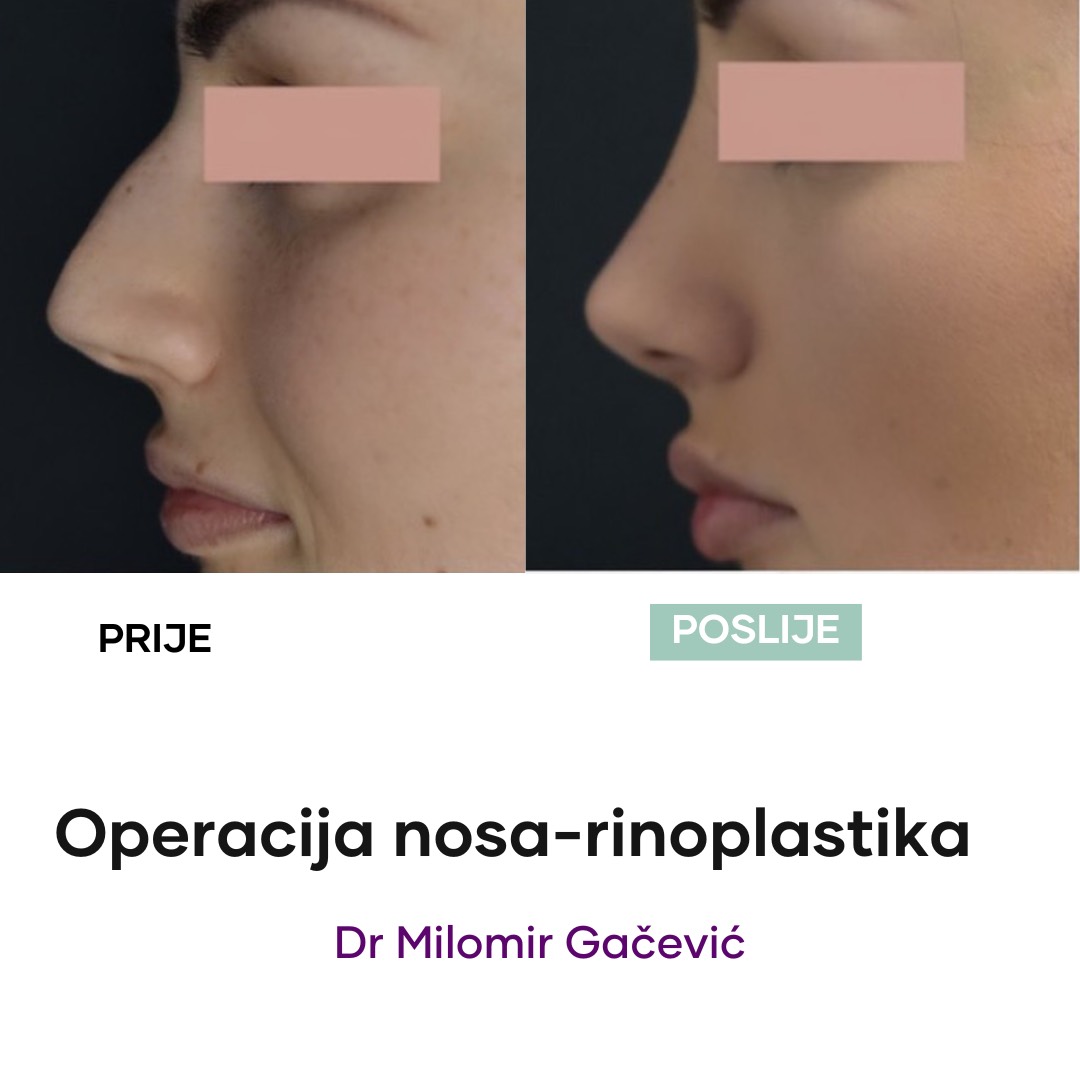
Nose surgery or rhinoplasty is one of the most challenging procedures in plastic surgery. Today's approach to rhinoplasty is different than it was before, as the nose is not seen isolated from the face, but instead it’s seen as a part with cheeks, lips, chin and forehead. There is a wide range of problems that can be solved successfully with nose surgery: hump on the dorsum, crooked, too long or too short nose, broad nasal pyramid, irregular nose tip, a too wide or too narrow nose, asymmetric or wide nostrils, etc. Surgery can also shape the bone and cartilage structure of the nose. What you should always keep in mind is that the nose is already partly determined by its initial shape and dimensions.
Septoplasty is procedure designed to improve the appaearance of the nose in order to solve functional problems with breathing. It can be underdone separately or with rhinoplasty.
4. Chin correction
A double chin occurs as a result of the relaxation of flat muscles in the neck and the creation of fat pads. It is associated with hereditance, a consequence of aging, it is often associated with excessive weight gain, but it is also found in people who are not prone to weight gain. Many people experience that even after the weight loss, the double chin still exists. This is why, liposuction is the best option. But, with eldary double chin has to be surgicaly corrected because of the excess skin.
5. Facelift
Facelift is a procedure that removes initial signs of aging-natural folds and face lines, elasticity of skin and relaxation of the facial muscles. Because this surgery has long term results (5 years and more), it is often combined with other surgeries and non surgical interventions.
6. Neck lift
First signs of aging are mostly to show at neck area, as it is so visible. These changes are folds, excess skin and fat, and muscle relaxation. Neck lift surgery is often combined with facelift surgery, because of the final effect of younger and smother skin and overall look of the patient.
1. Abdominoplasty
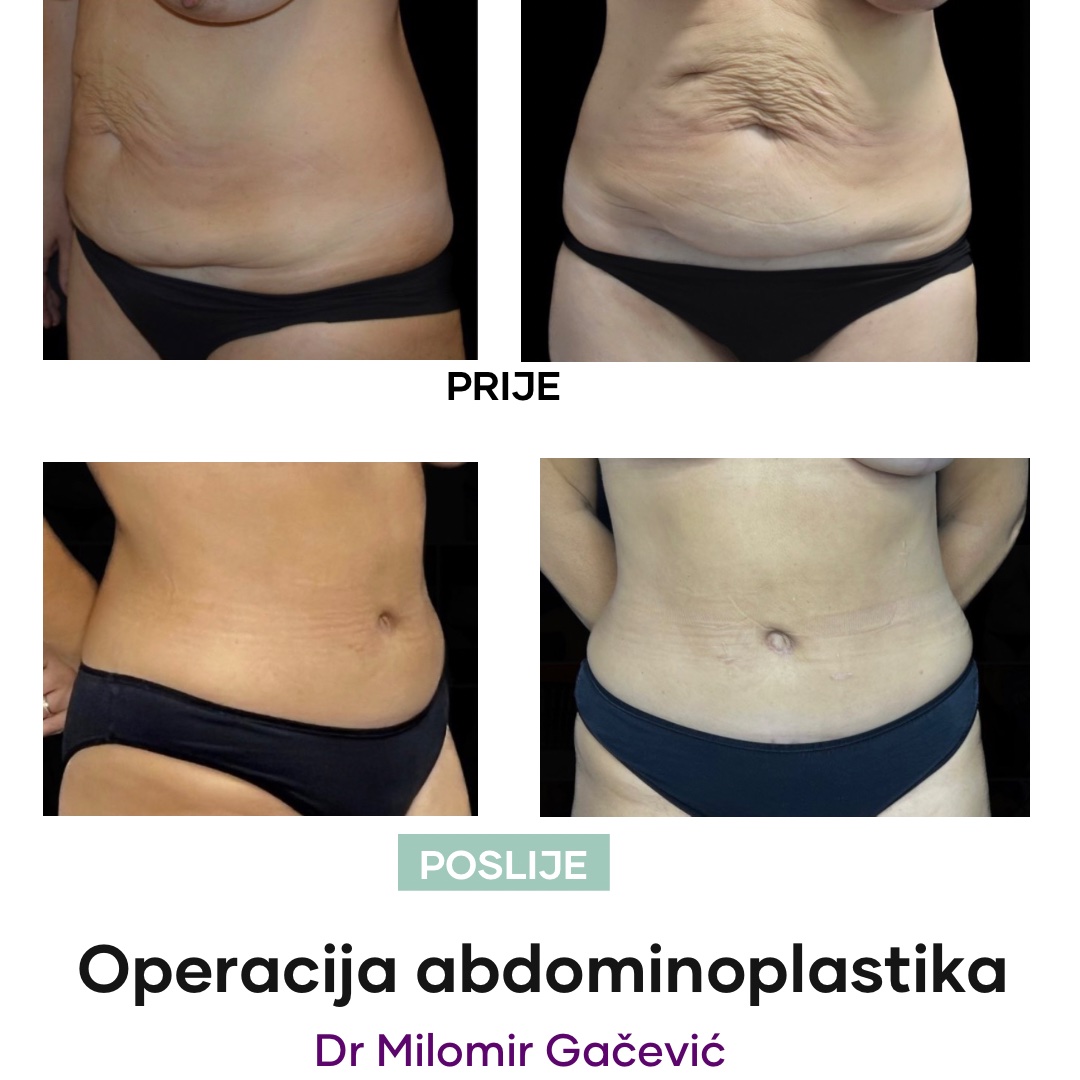
Abodminoplasty (tummy tuck) is a procedure, which treats loosed skin from the abdomen area, that mostly occurs after major weight loss or gain. Quite often muscle relaxation happens after multiple pregnancies. The procedure reduces fat on the belly and eliminates excess skin, and also tightens the abdominal wall, to have maximum result. Patients wear corset that is given in the clinic for better results. All other instructions will be given by the doctor and clinic staff.
2. Liposuction
Liposuction is one of the most popular cometic surgical procedures. It reduces and re-shapes certain part of the body, by eliminating the excess fat tissue. The most common parts of the body for liposuction are abdomen, hips, arms, thighs, calves and buttocks. Liposution is not the intervention by which patient loses weight, it changes silhouette of the body by removing the fat tissue. Aditional information will be provided by the doctor at the clinic.
3. Arm lift –Branchioplasty
The upper arm lift is surgical procedure that removes the excess fat tissue and loose skin. Over time, the soft tissue in the upper arm becomes loose and may begin to droop and sag. The arm lift procedure is ideal for patients who have a significant amount of excess, hanging skin or fat in the upper arm area, maintain a stable weight and have realistic expectations for surgery.
4. Thigh lift
The thigh lift removes the loose skin and sagging fat tissue over the upper inner portion of the thigh down to the knees. This procedure is often performed for patients who have experienced significant weight loss. The inner thighs must be contoured within limits of buttocks, stomach and legs. The outer thigh is generally not targeted in a thigh lift, as liposuction and a butt lift tend to produce better results in that area of the leg. This procedure may be performed alone, or in combination with other cosmetic procedures. When combined with other procedures, patients can achieve maximum results.
5. Butt lift
Butt lift improves and/or removes excess skin on the butt and thighs, which are the result of weight loss or aging. When there is excess skin tissue, butt typically appears flat, droopy or it quite often happens that the tissue concentrates just above the fold of the butt, instead of overlying the main part of the butt where it belongs. After the suregery, patient receives corset, which he needs to wear for some period.
6. Butt augmentation surgical procedure
Butt augmentation is surgical procedure that places specially designed silicone implants between the two layers of the muscle. This surgery does not change the shape of the butt; it changes size and proportion to the rest of the body. Many patients with flat, asymmetrical or handing butt choose this procedure to imrove their physical appearance.
7. Labioplasty
Labioplasty is surgical procedure that reshapes or reduces the skin surrounding the vaginal opening. Often, women are born with large or irregular labia, also they can feel discomfort while wearing tught clothes, during sexual intercourse or while doing sports other physical activity. This procedure removes the excees skin of labia, while reshaping it.
8. Augmentation
This surgical procedure builds the breast implants (filled with cohesive silicone gel of the latest generation), which can be anatomical (teardrop-shaped) and round shape. It is very important for patient to choose the right shape and size, because of many reasons. First of all, inappropriate size implants can increase the effect of gravity due to weight and press forward earlier sagging breasts. Also, if a patient has asymmetrical breast size or has to reconstruct breast after mastectomy. Implants can be placed under the breast tissue or underneath and partially below the gland and underlying muscles, depending on what size or shape the implant is. Every patient is given a medical bra to wear after the surgical procedure.
9. Mastopexy- breast lift
Mastopexy or breast lift is surgical method which gives breasts a new look, firmness and position. Due to the loss of elasticity of the skin during pregnancy breasts are changing their appearance and firmness and begin to descend, also the force of gravity over the years affects the appearance of women's breasts. These are the most common reasons why patients choose this surgery. There are various techniques to lift breasts, depending on the nature and degree of sagging (based on the location of the nipples to the inframammary line). Every patient is given a medical bra to wear after the surgical procedure.
10. Reduction mammoplasty
Reduction mammoplasty is surgical procedure that removes great amount of tissue from the breast. It could be done for both aestethic and functional reasons. Many patients suffer from neck and back pain, because of the size of the breasts. Also, they can not do sports, have difficulty moving and sometimes have inflammation of the skin under the breasts. Every patient is given a medical bra to wear after the surgical procedure.
11. Gynecomastia- male breast reduction
Gynecomastia is a benign increase of male breast resulting from hypertrophy or increased glandular breast parenchyma and accumulation of subcutaneous fat deposits. Gynecomastia cannot be prevented, but it can be corrected by breast reduction for men, liposuction or mastectomy.
1. Scar removal
Regardless of the reason for the appearance of the scars, which could be inflammatory, traumatic, metabolic or something else, they can be treated surgically. Plastic surgery offers many options in treating scars, but they depend on the time passed from the injury. It is very import to have real expectations, as many scars can not be treated completely.
2. Removal of moles
Each person has an average of 20 to 40 moles on his body and face, some of whom we were born with, while the majority is caused by UV exposure during life. Moles can occur in all parts of the body and are usually brown, which is derived from melanin (pigment in the skin) can be of a different shape. Moles are mostly benign changes; however, in some cases they need to be surgically removed with the histopathology analysis. If a mole or other skin lesions are removed at an early stage, all cancerous cells are removed from the body and, once removed, they rearly reappear. Most moles are benign formations that do not represent any danger to health, but some still need attention. This refers to pigment changes that alter size, shape or color, that bleed, itch, become painful or occur after the age of twenty.
Dermatologist check up will provide important information about the mole and its removal.
Surgical removal (incision) - Moles are removed for aesthetic reasons, especially if they are on the face. But, mostly moles are removed if the vary in size and characteristics (shape or color, that bleed, itch, become painful). This procedure is done under local anesthestia. The scars are minimal and recovery time takes no more then 7-10 days.
RF method- is also an option to remove changes with use of local anestehia, which is injected under the lesion. After removing mole, it is possible to send sample to the PHD (histopathology) analysis where it is determined if the change is benign.
Discus hernia surgery (cervical and lumbar)
Disc hernia is a condition that occurs due to degenerative changes in the lumbar part of the spine. Discuses are located between the 24 vertebrae of our spine. Although they are not joints, because of theirs structure, height and mobility in all four directions, they are considered ones. The most common places for disc hernia is lumbar part of the spine L4-L5 i L5-S1, because the last two experience the highest pressure. Both types of discus hernia surgery can be operated in Medtim hospital by top surgeons in the field.
Hernia surgery
There are different locations where hernias occur such as groin, inguinal, belly button (umbilical) and on the site of a previous surgery (incision-ventral hernia). Inguinal hernias are the most common type of hernia. They occur in a part of the abdominal wall, known as the inguinal canal, where a man’s testicles must descend before birth. This leaves a natural defect called the internal inguinal ring that can develop into hernia if it does not seal properly. Femoral hernias along with inguinal hernias are groin hernias. Umbilical hernias are congenital or acquired weakness of the umbilical ring and are manifested by bulge in the abdominal region. Ventral hernias are the consequences of a surgical procedure on the front abdominal wall.
Thyroid gland surgery
The thyroid gland is a butterfly-shaped organ, located in the base of your neck. It releases hormone thyroxin that is essential for normal growth and development. The thyroid hormones regulate vital body functions including: breathing, heart rate, central and peripheral nervous systems, body weight, muscle strength, menstrual cycles, body temperature, cholesterol levels and much more. The function of thyroid gland can be reduced or increased. The most common reason is autoimmune phenomena in which individual structural elements of the thyroid gland become it owns aggression targets. There are minimal complications during this procedure.
Breast surgery
The early diagnosis of breast tumor is of a major importance. For small-size tumors, minor surgical intervention is needed and the breast is spared. Signs of breast cancer may include a lump in the breast, a change in breast shape, dimpling of the skin, fluid coming from the nipple, or a red scaly patch of skin. In those with distant spread of the disease, there may be bone pain, swollen lymph nodes, and shortness of breath. If a patient experiences any of the signs above, they should contact general surgeon for a consultation. Afterwards, depending on the stage and the type, the surgeon decides what the best option for treatment is.
Anal abscess and fistula
An anal fistula is a chronic condition which occurs in 99% of cases after an anal abscess. Anal abscess is an acute condition characterized by a swelling near the anus, strong pain, increased temperature, drainage from the perianal skin, irritation of the perianal skin and sometimes rectal bleeding. It is quite often that the surgery is the only option for this acute problem. This procedure involves uprooting the tract, thus connecting the internal opening within the anal canal to the external opening and creating the groove that will heal from the inside out.
Pilonidal sinus surgery
A pilonidal sinus is a small tunnel in the skin. One of the causes of pilonidal sinus may be a minor abnormality we were born with, in the skin between the buttocks. Part of the abnormality in this part of skin may be that the hairs grow into skin rather than outwards. Another cause is that skin dimples are developed in the skin between your buttocks. Whatever the cause, once hair fragments become stuck in your skin, they irritate it and cause inflammation. The infection causes the sinus to develop which often contains broken pieces of hair. The surgery punctures and drains the surrounding skin infection (abscess). The wound is not closed but just left open to heal by natural healing processes. There is also the possibility of closing the wound immediately after the operation, but it bears the risk of a recurrence or of developing a wound infection.
Audiometry
Audiometry is a non-invasive diagnostic procedure that examines hearing and determines the location and degree of hearing impairment. The examination is done as routine hearing or for the patients with registered hearing impairment.The examination is completely painless.
Tympanometry
Tympanometry is a method that detects middle ear, which is located behind the eardrum. Eardrum is a thin tissue that separates the middle from outer ear. Tympanometry estimates the movement of the eardrum that occurs after changing the pressure in the ear.
Septoplasty
Septoplasty is procedure designed to improve the appaearance of the nose in order to solve functional problems with breathing. It can be underdone separately or with rhinoplasty.
Otoplasty
Otoplasty is corrective surgery, which is mostly performed in early age, as ear shell reaches their full size and appearance by 4th year. It can be done in local or general anesthesia, and the doctor makes the cut behind the ear shell , which creates the access to the earlobes cartilage. Afterwards, the cartilage is corrected and put in right possition.
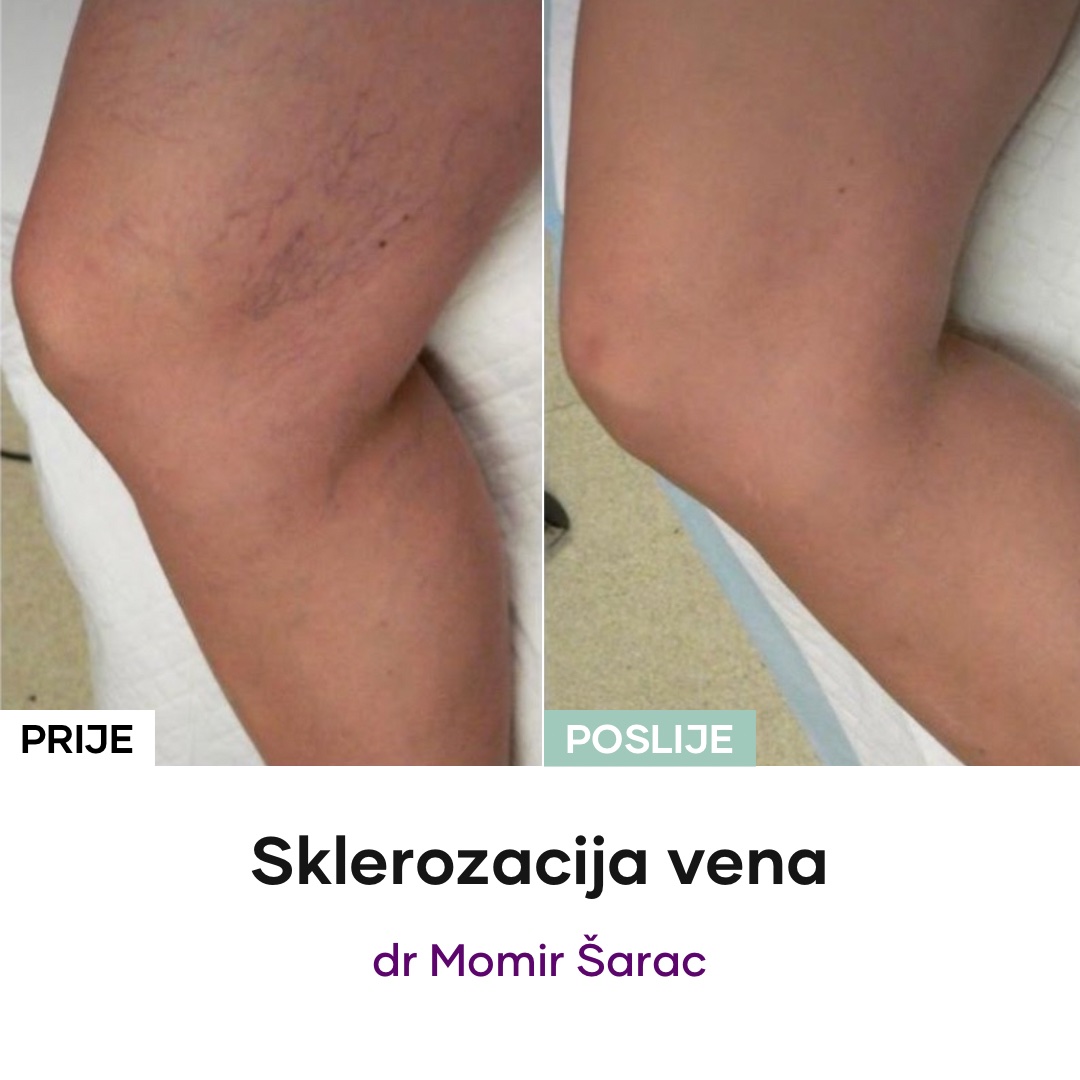
Varicose veins are one of the most common diseases in the world today (2/3 of the world's adult population has problems with the veins). They occur in every other woman and every third man. Varicose veins are visible to the eye, bulging, and superficial veins on the legs, which are usually caused by damage of the vein valves, which control the blood flow from the periphery to the heart. However, if these valves are damaged, then the blood does not go only to the heart, but it returnes to the lower parts of the veins, causing enlargement of the walls. Generally, they are caused by genetic predisposition, obesity, physical inactivity and long standing.
Radiofrequency ablation is a minimally invasive treatment for varicose veins. (Ablation means a doctor uses heat to damage tissue, which makes scar tissue form. This scar tissue closes the vein.) This technique uses radiofrequency energy (instead of laser energy) to heat up and damages the wall inside a vein. This usually closes off a varicose vein in the leg. After treatment, patients need to wear compression stocking. The operation is performed in the local (TLA) anesthesia.
EVLA is a method that is performed in the same manner as RF ablation, except that the heat is released from the tip of the catheter of the laser probe. This is how the vein is closed. After one year, closed vein usually dissapers (its absorbed by the body). The operation is performed in the local (TLA) anesthesia. After treatment patients need to wear compression stocking.
There is a big misconception that the veins are not treated in the summer months. Thanks to the minimally invasive procedure, laser treatment of veins and RF method can be performed all year round, even in the summer months.
Classical surgery of veins involves removing the damaged veins, while creating multiple incisions and sutures on the skin. Consequently because the classical method is performed under general endotracheal anesthesia, postoperative period is longer. Therefore, in the last decade classical vein surgery has been replaced by modern methods, such as RF ablation of laser surgery.
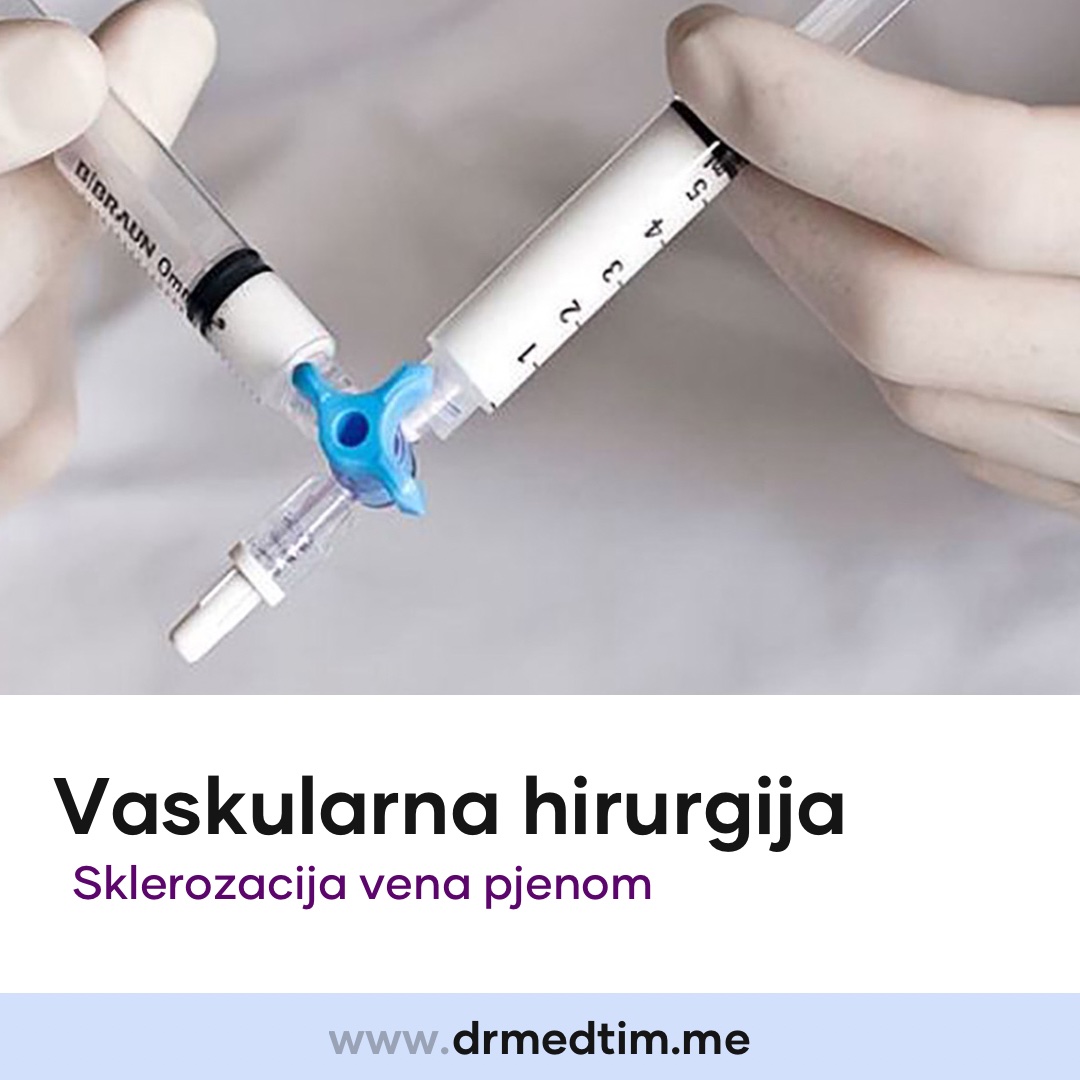
Sclerotherapy with foam is a method of treating damaged small veins and capillars, which are in a form of a spider web (spider veins). Needle with chemical substance (foam) is followed by untrasound for precise injection and perfect results. The intervention itself does not require anesthesia and hospitalization. It is necessary to wear compression stockings two weeks after the intervention or longer if the surgeon suggests otherwise. It usually takes several treatments (two to three), so that all changes can be removed. Treatments are repeated in the range of four to six weeks.